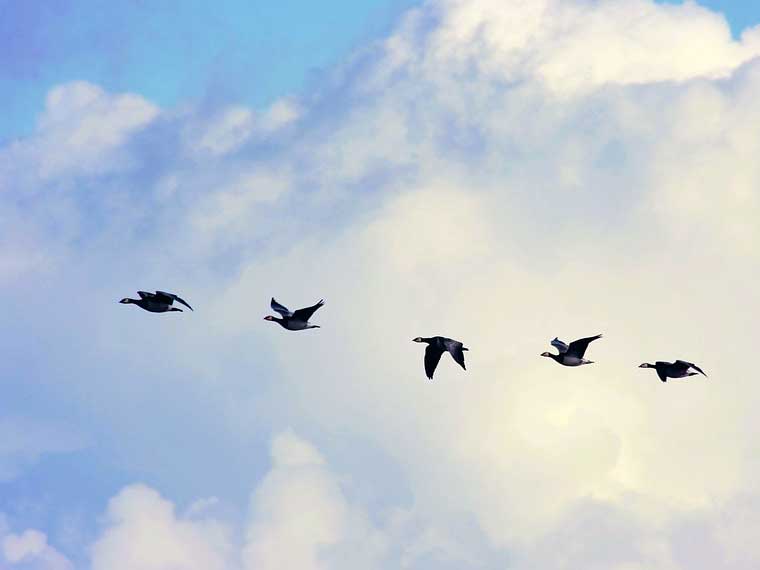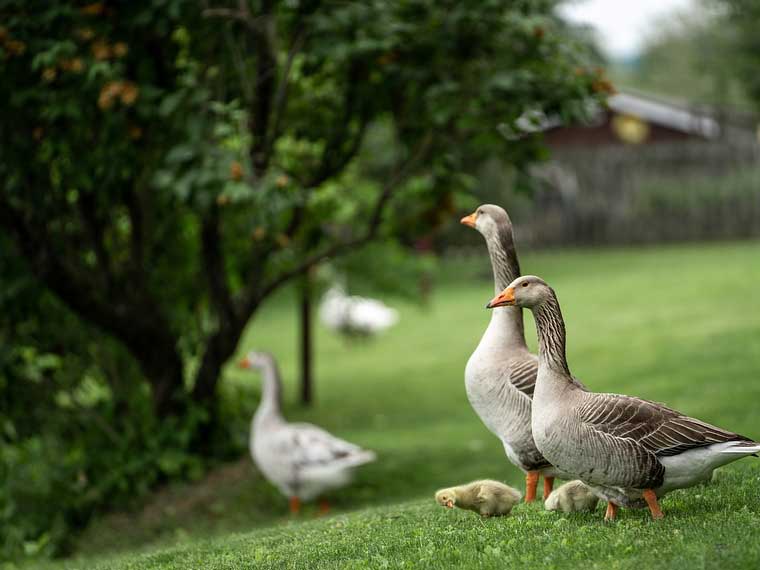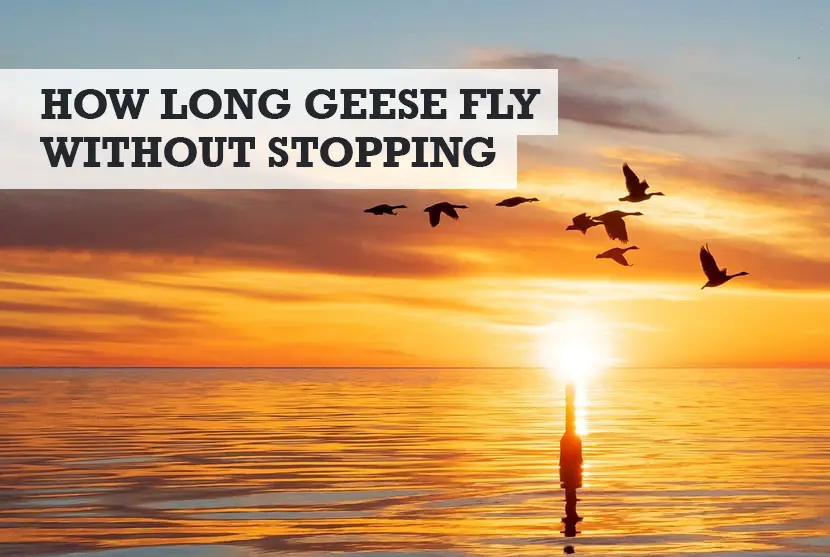Geese will long distances during the migration. It’s said that they can fly in excess 1,500 kilometers (932 miles) in one day, which sounds almost unbelievable. Of course, geese can’t fly that distance without stopping, they must take breaks. But how far can they fly non-stop?
How long do geese fly without stopping? Geese can fly between 100 and 200 miles without stopping so will be flight for several hours. They will stop and rest somewhere safe on the migration route based on older geese having done the journey before.
Geese can fly for several hours a day without stopping and cannot fly the entire migration route in on go. This is physically impossible for them.
Most geese species will only fly during the day, making stops on the way. They can often cover distances of 200 to 400 miles in a day, with a few stops inbetween.
How do geese fly without stopping?
If you’ve ever seen that v-formation that geese fly in, you might not realize why they take this flight shape. Next time you hear geese honking in flight, take a look up, as the V helps them fly long distances without stopping.
When geese are in the v-formation, one goose usually flies above the other geese, meaning there is less wind resistance making it easier for the geese behind them to fly in a sort of gliding motion.
The wingspan of a goose spans from four and a half feet to six feet. Their wide wingspan aids in helping geese fly for long periods of time without stopping.

Geese can tire out during their long flights across Canada and the United States, and if that happens, they will drop into the back of the v-formation, leaving another goose to take up the mantle as a lead goose creating the wind resistance to aid the other birds.
How do geese fly so long without stopping?
Have you ever watched cyclists ride in a line, one right behind the other? The reason cyclists ride like that is to conserve energy. When geese are in their v-formation, they are doing the same thing.
As geese fly, they are simultaneously flapping their wings while lifting themselves higher. A current is formed because of all the air movement generated from the goose flapping its wings, creating a space for the other geese to fly and conserve energy.
Why do geese fly south for the winter?
Geese rely on open water bodies for sustenance, but during the long, freezing winters in Canada and the Northern United States, the lakes and rivers freeze over. The frozen lakes and rivers mean geese and their offspring are in danger of starving to death.
Further south, Geese stand a better chance of finding food, so they always fly south for the winter. The geese will eventually fly back north, usually during the early spring. During this time, the geese reproduce and start the next generation of geese.
How do geese fly for more extended periods without resting?
Geese actually do get a chance to rest while they are flying. The geese who are in the back of the v formation are practically not flying at all but are gliding through the air. The geese in the front of the v-formation are doing the most work by flapping their wings and creating that pocket of air for the other recovering birds.
This pocket of air is formed when the birds in the front flap their wings fast and hard. The birds behind them then utilize this to glide through the air until it is their turn to fly in front. That is why the process of molting is so vital for a goose to fly for long periods without stopping.
An excellent example of this is to think of air dynamics with cars and trucks. Think of 18-wheelers you see on the highway with “wings” on the back end. The vehicle’s structure helps airflow, gas mileage and can even preserve gas for the cars directly behind the trucks.

What is molting?
Molting is the process of replacing old feathers with new feathers in preparation for a goose’s long flight south for the winter. Birds need their feathers to be in excellent condition before they embark on their journey south. Their wings cannot be damaged or missing, or they will not be able to fly with their families.
The feathers on the goose help create that air current that makes flying so much easier for the other geese. If a feather is missing or damaged, a goose will lose the ability to fly until it is replaced during molting. Once the damaged feathers are replaced, the goose can go back to flying like normal.
How long do geese molt?
Geese molt anywhere between four and six weeks. Molting occurs at least once a year, but for some birds, like ducks, molting can happen a few times a year. Geese molt in the summertime, around mid-June to mid-July.
Geese are busy during this time raising their families, making it the perfect time to molt as the little goslings cannot fly either. The goose can then take care of its offspring until it is time to pack up and fly south.
Related questions on goose flight
When you think of geese, you almost always picture the pack of them flying through the air together effortlessly. The v-formation does not happen by coincidence; it is an instinct for the birds and is crucial for the livelihood of the birds.
Aside from the formation, you may be wondering what other key factors go into geese taking flight.
How long can a google fly without getting tired?
Believe it or not, a goose can fly for two hundred days straight. The v-formation that geese are so well known for helps geese to fly for these long periods without stopping.
Why do geese fly in formation?
Geese fly in that famous v shape to help create a more effortless flying experience on their long flights south before the winter. The birds in front do most of the work, flapping their wings so the birds behind them can use the current of air to glide through the sky.
The geese in front experience the most wind resistance but, by doing so, blocks the wind from hitting its family members who are flying in the back.
Do geese stop flying when they get tired?
If a goose gets tired while flying down south during the winter months, it will not stop flying, but instead, the goose will fall further back in the v-formation.
Is there a time when a goose cannot fly?
Geese cannot fly when they are little goslings and when they are molting. Once they are fully grown, a goose will be able to fly unless injured. When all of its feathers grow back in, the goose will also be able to fly.
Do geese sleep while flying?
Geese can sleep while flying but only when they are in the back of the v-formation and are not responsible for flapping their wings for the air current.
They also only sleep for about ten to twenty seconds at a time! While on the land, geese sleep in the water for up to twelve hours.
Conclusion
Geese are native to North America and can be found in Canada and the Great Lakes region of the United States. They are well-known for their down feathers and the iconic v-formation they take when flying.
And it’s this approach to flying which can help them fly without stopping for quite considerable distances… but to think they can fly the entire migration route with stopping isn’t true. They will need to rest and eat every few hours.
You might also like…
- The truth about geese flying and pooping at the same time
- Where geese go when it starts to rain
- How long a goose will sit on dead eggs
Image in header via https://unsplash.com/photos/WNVx3q5Z4wY

